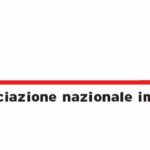
Don’t perform endotracheal aspirations at regular intervals but according to early indicators of retention of bronchial secretions.
Endotracheal suctioning of secretions through a ventilatory prosthesis (orotracheal or tracheostomy tube) is not a riskless procedure. Despite international literature is lacking both on the ways and on the times of suction, since long ago the main recommendations are that the procedure should be carried out with the minimum frequency or when clinically indicated by the presence of secretions in the ventilatory prosthesis. The early indicators for the diagnosis of bronchial secretions retention are: change in the volume flow loop (presence of a “saw tooth” track); presence of coarse crackles (detectable by dedicated tools); increase in peak pressure in volumetric ventilation or decreased current volume in pressometric ventilation, arterial desaturation. In the absence of these indicators do not perform “routine aspirations.”
Sources
1. American Association for Respiratory Care. Clinical practice guideline. Endotracheal suctioning of mechanically ventilated patients with artificial airways: 2010. Respir Care 2010; 55(6): 758–764.
2. Lucchini A, Zanella A, Bellani G, Gariboldi R, Foti G, Pesenti A, Fumagalli R. Tracheal secretion management in the mechanically ventilated patient: comparison of standard assessment and an acoustic secretion detector. Respir Care 2011 May; 56(5): 596-603.
3. Pedersen CM, Rosendahl-Nielsen M, Hjermind J, Egerod I. Endotracheal suctioning of the adult intubated patient-what is the evidence? Intensive Critic Care Nurs 2009; 25(1): 21-30.
Attention. Please note that these items are provided only for information and are not intended as a substitute for consultation with a clinician. Patients with any specific questions about the items on this list or their individual situation should consult their clinician.


Recent Comments